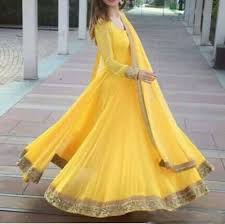Sarees are often overlooked by women who want to show off their ethnic clothing. Our selection of 10 Indian regional sarees exemplifies the excellence of Indian craftsmanship thus adding to your wardrobe.
Saris made of kalamkari
Kalamkari is a method of hand painting cotton or silk fabric with natural colours and a tamarind pen. In Persian, “kalamkari” means pen and “kari,” which is the source of the English word “kalamkari.” This craft involves 23 steps, including starching, cleaning, hand painting, block printing, and dying. Kalamkai sarees work uses motifs from Hindu epics such as the Mahabharata and Ramayana, including flowers, peacocks, and paisleys.
It takes 23 steps to create kalamkari
A great deal of accuracy and attention to detail go into the entire process, from the natural bleaching to softening to sun drying, creating natural dyes to hand painting to air drying to washing. Kalamkari cotton cloth is initially treated with a mixture of bleach and cow dung. This solution turns the cloth a consistent off-white colour after soaking for hours. After that, the cotton is soaked in buffalo milk and Myrobalans. This prevents dye smearing when natural dyes are used to paint the cloth. In order to remove the smell of buffalo milk, the cloth is washed in running water.
In preparation for painting, artists draw patterns and motifs on the cloth. The Kalamkari artisans then dye the lines with natural dyes. Kalamkars sarees use tamarind twigs as pens to draw intricate designs of Krishna Raas-Leela, Hindu deities like Parvati, Vishnu, and ShriJaganath, as well as peacocks and lotuses and scenes from Hindu epics.
1. Pattitra
Pattachitra style painting is one of the oldest and most well-known art styles. It is mostly practiced in West Bengal and Odisha. Pattachitra is formed from the Sanskrit words “patta” and “chitra” meaning cloth and image, respectively. Art forms like this have been practiced since the 12th century and are among the oldest and most well-known. Chitrakars, or Pattachitra saree painters, were primarily inspired by Hindu mythology for their icon paintings. Among the most popular themes are the Badhia (a representation of the Jagannath temple), Krishna Lila (a representation of Jagannath as Lord Krishna as a child), Dasabatara Patti, and Panchamukhi (a representation of Lord Ganesha as a five-headed deity).
In this display, all the occurrences are displayed together. As a result of the blending of folk and classical elements, the Pattachitra style created.
2. Sarees in Paithani
Paithani sarees online have a story to tell. There is a long history behind this historical tale. There is a story about silk and zari. A story about grandeur, elegance, and beauty. A story about tradition. Paithani sarees date back to the Rigveda, which originated in Maharashtra. 18th-century Paithani culture flourished under Peshwas’ support. Paithani textiles are reputed to have been a special passion for Madhavrao Peshwa. Legend has it that the Nizam of Hyderabad was also enchanted with the Paithani saree , and his daughter-in-law Nilofer added additional patterns to the pallav and border. Therefore, additional themes were later added by the Mughals.
In the past, Paithan was a thriving commercial hub called Pratishthan, from which fine textiles and precious stones were shipped. History records that magnificent paithani sarees with exquisite gold and silver thread work were traded for gold between 200 and 400 BC.
Whyis the Paithani so enticing? Colors, zari, silk, or designs account for the appeal? This may be due to the overall richness of the country. Totally handwoven on looms, its fabric is 100% cotton. The colors are exquisite, and the patterns are intricate. The dhoop-chhav is woven using two different colours in a straightforward tabby weave. In spite of the Paithani’s simplicity, its ornate border and pallav give it a sense of grandeur. Gold was once used to make zari. Paithani is unique because no mechanised production techniques are used.
3. Kanjeevaram sarees
It is Hindu mythology that gives rise to Kanjivaram sarees online. Kanjeevaram Silk Weavers claim descent from the Markanda Silk Weavers who reportedly woven garments for the Gods themselves. From the small town of Kanchipuram in Tamil Nadu, this beautiful weaving dates back more than 400 years. Devangas and Saligars are two of the most important weaving tribes reported to have moved from Andhra Pradesh to Kanchipuram. Using their weaving skills, they began weaving beautiful motifs from the temples around the town into mesmerizing Kanjeevaram silk sarees. As time went on, this lovely cloth gained notoriety and became an important component of sarees.
4. Chanderi sarees
Chanderi’s output from India has been maintained as a geographical indicator. The Vindhyachal mountain ranges contain a small settlement called Chanderi near the Betwa River. Due to its advantageous position in central India, Chanderi, located in the Ashoknagar district of Madhya Pradesh, experiences brisk economic growth due to its historical past. Chanderi is where the looms are located. Many looms and bunker colonies are located in the oldest section of the city, sometimes called “Baharsheher” or “out-of-town.” The echoes of work frames can be heard all around Chanderi. Chanderi’s anticipation also funded weaving. There was an awareness that Chanderi’s fate was linked to the fabric they carried.
5.Chikankari
The unique fusion of traditional and modern values is one of the hallmarks of Lucknow sarees. Lucknow is also known for its mouthwatering kebabs, gorgeous architecture, and extensive knowledge of the Nawabs. One of the most well-known embroidery techniques is chikankari, which means embroidery in Hindi. Traditional cloth embellishment techniques have gained worldwide fame. There are a variety of etymologies associated with the term “Chikan” since it has different meanings in different languages. The Persian word Chakin or Chakeen means creating delicate designs on a fabric, while the East Bengali word Chikan means fine.
6. Sarees in Bandhani
Rajasthan, Gujarat, and a few regions of Uttar Pradesh mostly use the tie-dye technique known as Bandhej, also known as Bandhani. In Sanskrit, banda means “to tie.” The word bandhani is derived from this term. Bandhani refers to a process of dyeing a fabric and then tightly binding it with thread at various spots to create patterns. Bandhej is the oldest type of tie-and-die art, dating back roughly 5000 years. It is believed that Bana Bhatt first wore the Bandhani saree at Harshacharita, during a royal wedding. Ajanta caves have some of the earliest graphic representations in the world. Bandhani handicraft was invented in India by the Gujarati Khatri Community.












